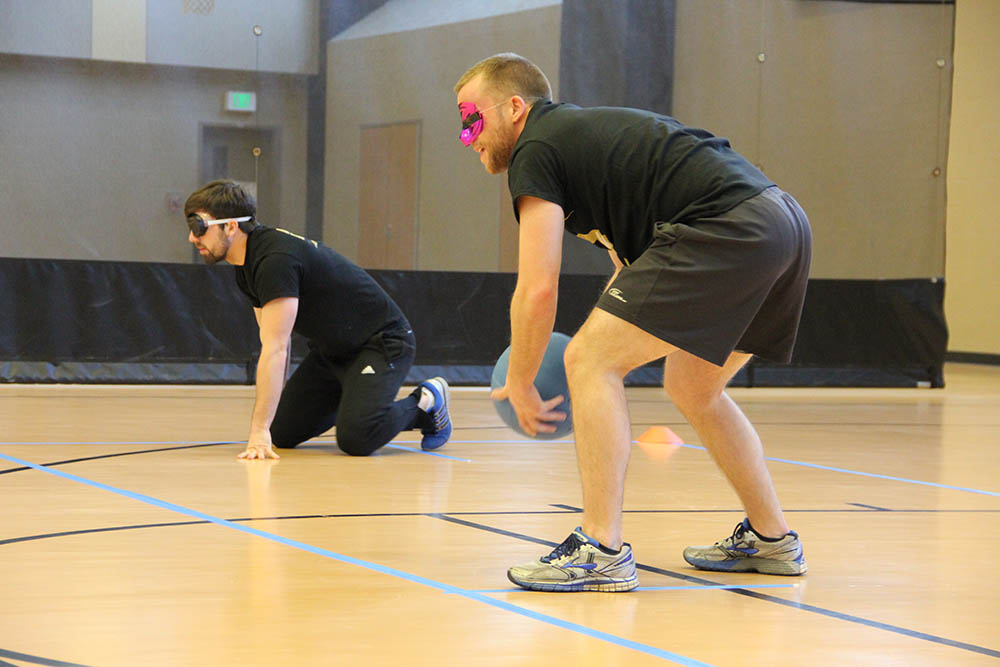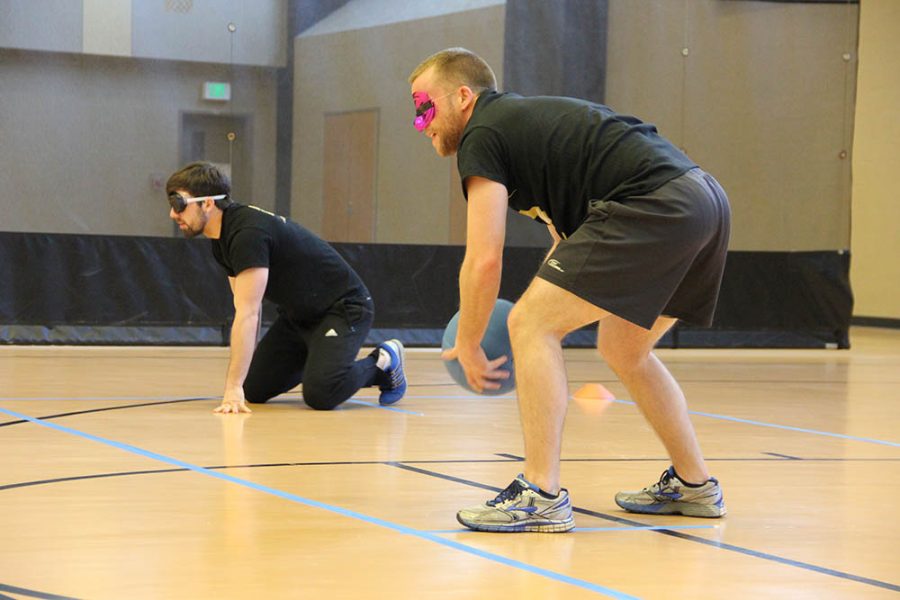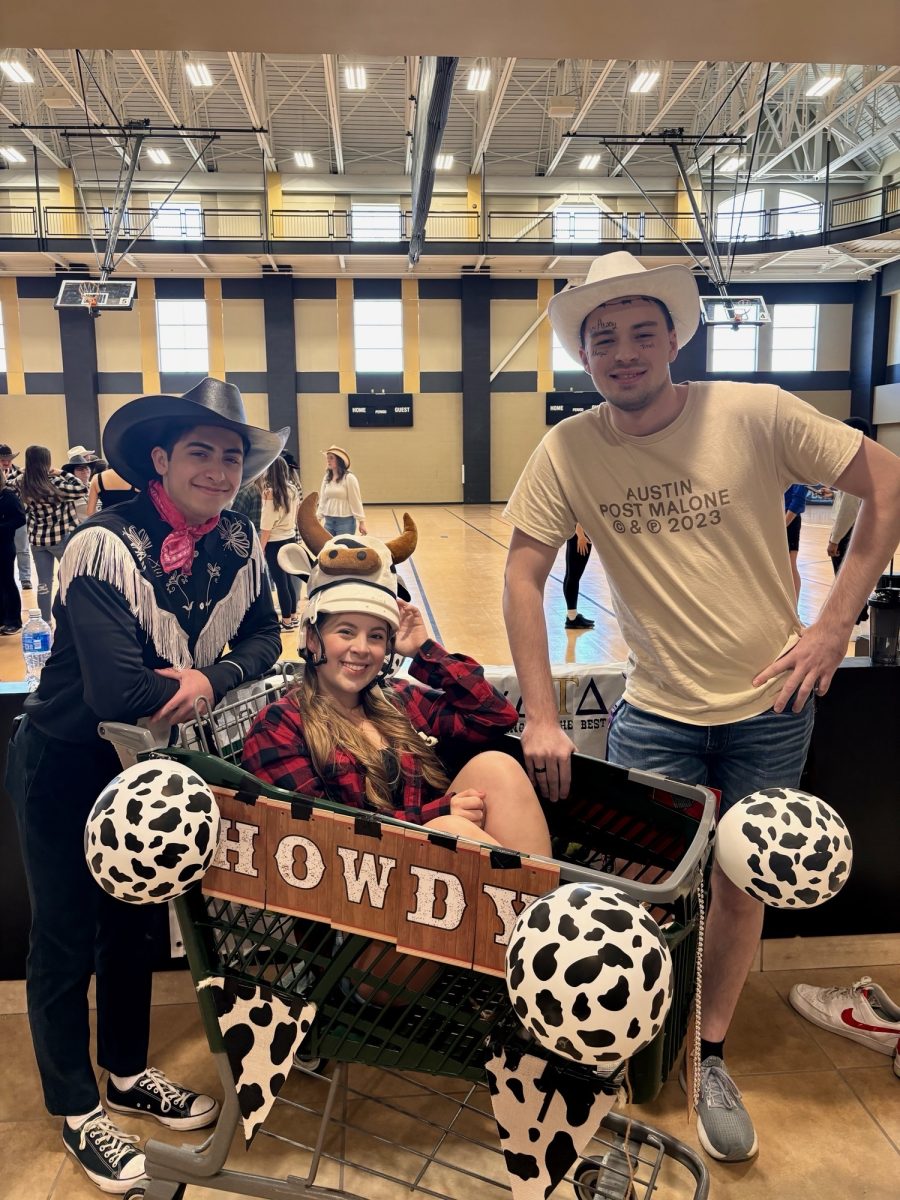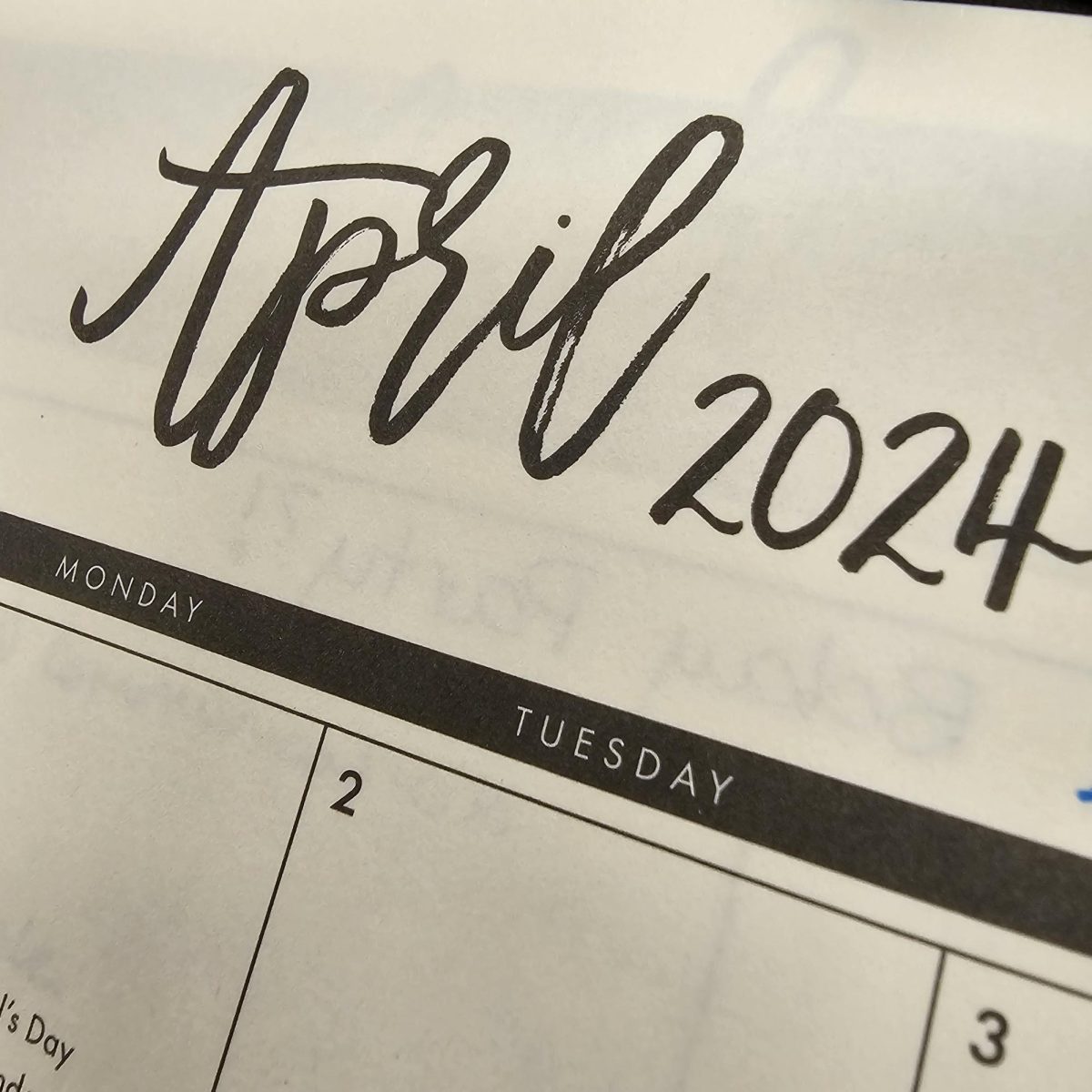
Richie Stecker experiences how visually impaired athletes must compete.
Brayden Parker | Staff Reporter
Published February 18, 2015; 10:10 p.m.
Kneeling on the ground at Evans Courts, a blindfolded Bre’Ann Johnson hears the jingling bell sounds of the approaching ball. She anticipates the movement of the ball and dives to the right, intersecting its path and preventing the potential game-tying goal. Time expires and Johnson and her two teammates exchange high-fives, celebrating their first goalball victory of the day.
However, it is not just a win that Johnson has gained but after experiencing goalball, an adaptive sport for the visually impaired, for the first time she has also gained a new respect for her eyes.
“I have a new appreciation for my eyes,” Johnson said in between games. “This game is fun, but it’s also hard at the same time.”
Part of the Adaptive Sports Program, sponsored by the School of Sport, Recreation and Exercise Science, the goalball event was designed to create awareness of sports for disabled athletes and demonstrate how the games are played.
“The purpose was for the recognition and awareness of adaptive sports,” event volunteer Delaine Young said. “We want to get more people involved. There are so many people who have disabilities and they need people to help them train and there are so many ways to get them involved in sport.”
With help from students in the adaptive sport program, organizers began the morning by instructing participants on the basic rules of the game. After demonstrating the technique involved in the sport, students formed teams and competition began.
To simulate being blind, students wore masks to cover their eyes and had to depend upon only their hearing to locate the position of the ball. Many agreed that this was the hardest part of the game.
“The hardest part is listening for the ball, and the bells, and deciding which way to dive,” Johnson said.
Although friendly competition was involved, the purpose of the event, as well as sit volleyball and wheelchair basketball, was to promote all sport. The events showcased how sport includes a variety of athletes.
“This was for the appreciation of sport in general,” Young said, “and that anybody, whether you have a disability or not, can participate in sports competitively.”












